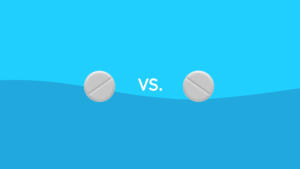Overnight Pulse Oximetry Test to Evaluate Oxygen Levels
Overnight Pulse Oximetry Test: Monitoring Oxygen Levels While You Sleep
Estimated Reading Time: 5 Minutes
What Is an Overnight Pulse Oximetry Test?
An overnight pulse oximetry test is a non-invasive, simple way to measure the oxygen levels in your blood as you sleep. This test is commonly used to detect conditions like obstructive sleep apnea or to qualify patients for home oxygen therapy.
Why Is Overnight Oximetry Done?
Healthcare providers may recommend this test if you show symptoms of sleep-related breathing disorders. It helps determine whether you experience drops in oxygen levels during sleep, which can indicate a need for further testing or treatment.
How Does Overnight Oximetry Work?
A Convenient At-Home Procedure
The test is typically performed at home using a device called a pulse oximeter—a clip-like sensor that attaches to your fingertip. It’s painless, easy to use, and held in place with a soft band or medical tape.
Technology Behind the Test
Inside the oximeter sensor is a red light that passes through your skin. On the opposite side is a detector that measures how much light is absorbed by your blood. This absorption helps determine your oxygen saturation level and pulse rate.
Understanding the Oxygen Desaturation Index (ODI)
ODI measures how many times per hour your blood oxygen level drops significantly while sleeping. Frequent drops—called “desaturations”—may indicate a condition like sleep apnea. The more often this happens, the more likely you have a sleep-related breathing disorder.
What the Test Results Mean
Normal and Abnormal Oxygen Levels
Oxygen saturation levels are generally considered abnormal when they fall below:
-
88% in adults
-
90% in children
Severe desaturations—especially those dropping below 80%—may indicate hypoxemia and warrant immediate medical attention.
Identifying the Cause of Oxygen Drops
Frequent drops in oxygen could be linked to:
-
Sleep apnea
-
Chronic lung diseases like COPD or emphysema
-
Sleep position (e.g., lying on your back)
-
REM sleep stages
Is Overnight Pulse Oximetry a Diagnostic Tool?
While overnight oximetry provides valuable insights, it cannot independently diagnose sleep apnea or be used to qualify for treatments like CPAP under insurance. However, it’s a useful first step to determine whether more comprehensive sleep studies are needed.
Further Testing Options
If your overnight oximetry results are concerning, your doctor may recommend:
-
Polysomnography (PSG): An in-lab sleep study
-
Home sleep apnea testing (HSAT): A more detailed home test
These tests track additional metrics like breathing rate, brain activity, and sleep stages.
Benefits and Limitations of Overnight Pulse Oximetry
Advantages
-
Non-invasive and painless
-
Easy to perform at home
-
Affordable and widely available
-
Quick way to screen for sleep disorders
Drawbacks
-
Doesn’t measure all sleep-related metrics
-
Cannot determine exact cause of oxygen drops
-
May miss subtler sleep conditions
Can You Buy an Oximeter Without a Prescription?
Yes. Pulse oximeters are available over the counter at pharmacies and online retailers. However, interpreting the data correctly and deciding on treatment still requires medical supervision.
Can Pulse Oximetry Be Used to Monitor Treatment Effectiveness?
Yes. For those already diagnosed with sleep apnea or receiving oxygen therapy, overnight oximetry can help track how well treatments like CPAP or BiPAP are working. It ensures oxygen levels remain stable throughout the night.
Conclusion: A Valuable First Step Toward Better Sleep Health
Overnight pulse oximetry is a helpful tool in detecting abnormal oxygen levels and identifying potential sleep disorders. While it doesn’t provide a full diagnosis, it plays a critical role in prompting further evaluation and guiding treatment decisions.







